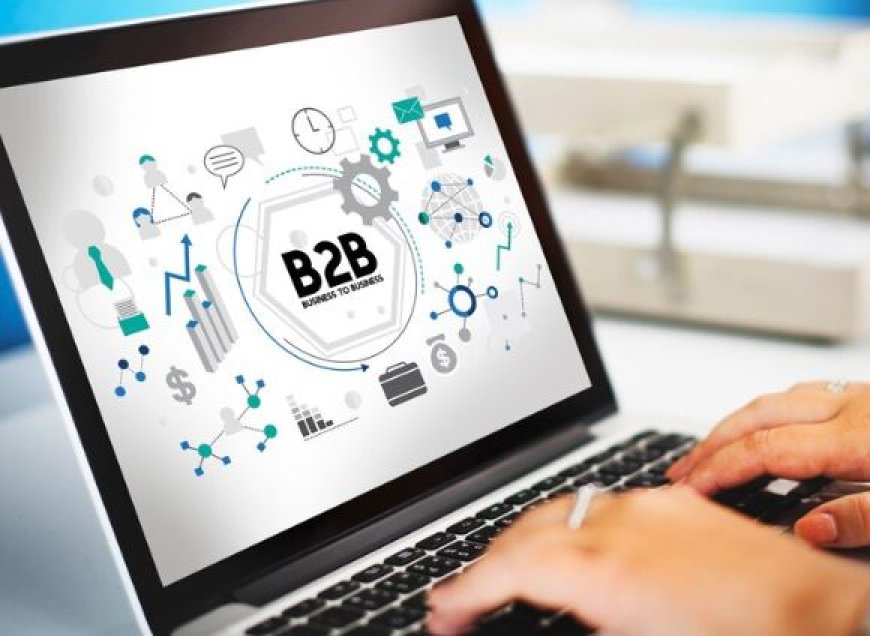The Ultimate B2B Lead Generation Guide: Proven Strategies to Grow Your Business

If you’ve been struggling to find the right strategies to generate leads for your business, you’re in the right place. Welcome to your B2B lead generation guide, where we’ll dive into practical, easy-to-follow steps that will help you attract more prospects and turn them into customers.
No fluff just actionable advice that you can implement today. So, grab your coffee and let’s get started!
1. What Exactly Is B2B Lead Generation?
Before we dive into the nitty-gritty of how to generate leads, let's clarify what B2B lead generation really means. Simply put, it’s the process of attracting potential business clients, nurturing them, and eventually turning them into paying customers.
Why Is B2B Lead Generation So Important?
You can’t grow your business if you don’t have customers, right? For most businesses, the B2B lead generation guide is like a treasure map—it leads you to people who are already interested in what you’re offering. But instead of waiting for them to knock on your door, you’ll proactively reach out to them.
By having a steady stream of high-quality leads, your sales team can focus on converting them into loyal clients rather than wasting time with cold calls that lead nowhere.
2. Different Types of B2B Leads
Not all leads are created equal. In fact, understanding the types of leads can help you better tailor your marketing strategy.
Marketing-Qualified Leads (MQLs)
These are people who’ve interacted with your marketing but aren’t quite ready to make a purchase. Maybe they’ve signed up for your newsletter or downloaded an e-book. They’re interested but still need a bit more convincing.
Sales-Qualified Leads (SQLs)
SQLs are further along the buyer’s journey. They’ve shown clear intent to purchase, making them prime candidates for your sales team to engage with directly.
In this B2B lead generation guide, you’ll learn how to target both MQLs and SQLs to maximize your chances of conversion.
3. Effective B2B Lead Generation Strategies
Alright, let’s roll up our sleeves and dive into the meat of this B2B lead generation guide: how to actually generate those leads.
A. Content Marketing
Content marketing is king when it comes to generating leads. Whether it’s blog posts, e-books, or webinars, providing valuable information builds trust with your audience. But here’s the kicker: your content should solve their problems, not just promote your products.
-
Tip: Create content that answers the questions your potential leads are Googling. The more you help, the more likely they are to see you as an expert in your field.
B. SEO and Blogging
Speaking of Googling, SEO (Search Engine Optimization) is crucial for driving organic traffic. By optimizing your website and blog posts for search engines, you can attract visitors who are actively searching for what you offer.
-
Tip: Research keywords related to your industry, and make sure to use them naturally in your content. This very B2B lead generation guide is an example of an SEO-optimized piece of content!
C. Social Media
Social media platforms, like LinkedIn, are goldmines for B2B lead generation for business . With the ability to target specific industries, job roles, and locations, you can get your content in front of the right people.
-
Tip: Don’t just post content—engage with your audience. Respond to comments, join relevant groups, and be an expert.
D. Email Marketing
Email is far from dead. In fact, it remains one of the most effective tools for generating B2B leads. The trick is to segment your email list and tailor your messages to different stages of the buyer’s journey.
-
Tip: Send targeted emails based on a lead’s interaction with your business. Did they download your e-book? Follow up with additional resources.
E. Paid Advertising
Sometimes, you need to invest in paid ads to fast-track your lead generation efforts. Platforms like Google Ads and LinkedIn Ads allow you to target specific demographics, increasing your chances of capturing high-quality leads.
-
Tip: Test different ad creatives and formats to see which resonates best with your target audience.
4. The Role of Landing Pages and Forms
Let’s talk about where your leads actually convert: landing pages and forms. These are the bridges between curiosity and conversion.
Optimizing Landing Pages
Your landing page should be designed with one goal in mind—conversion. Whether that’s filling out a form, scheduling a demo, or downloading a resource, make it clear what action you want the user to take.
-
Tip: Keep the landing page simple and focused. Remove distractions, and make your call-to-action (CTA) impossible to miss.
Forms That Don’t Scare People Off
Let’s be real: nobody likes filling out long forms. Keep your forms short and sweet. Only ask for the information you absolutely need—name, email, and maybe one or two other details. You can gather more information later as the relationship progresses.
-
Tip: Offer something valuable in exchange for their information, like an exclusive e-book or a free trial.
5. Nurturing Leads: Don’t Let Them Slip Away
Okay, you’ve got some leads. Now what? You can’t just sit back and hope they’ll convert on their own. Lead nurturing is the process of building relationships with your leads until they’re ready to make a purchase.
Personalize Your Outreach
People appreciate a personal touch. Use the information you’ve gathered to send personalized emails or messages. If they’ve shown interest in a particular product, follow up with more information or case studies that showcase how you’ve helped similar businesses.
Timing Is Everything
Lead nurturing is about finding the sweet spot between too much contact and not enough. If you bombard leads with messages, you’ll scare them off. But if you wait too long to follow up, they’ll forget about you.
-
Tip: Use marketing automation tools to help you send timely, relevant messages without overwhelming your leads.
6. Measuring Success: Key Metrics to Watch
So, how do you know if your lead generation strategies are actually working? It’s all about tracking the right metrics.
Conversion Rate
This is the percentage of visitors who complete a desired action, like filling out a form or signing up for a newsletter. A higher conversion rate means your strategy is working.
Cost Per Lead (CPL)
CPL tells you how much you’re spending to acquire each lead. If this number is too high, you may need to rethink your approach or optimize your ads.
Return on Investment (ROI)
Ultimately, lead generation is all about ROI. How much revenue are your leads bringing in compared to how much you’re spending to get them? Keep an eye on this metric to ensure your efforts are profitable.
Time to Put This B2B Lead Generation Guide into Action
There you have it—your comprehensive B2B lead generation guide. From content marketing to paid ads, we’ve covered the essentials to help you start attracting and converting leads like a pro. Remember, generating leads is a marathon, not a sprint. Consistency is key, and with the strategies we’ve discussed, you’ll be well on your way to business growth.
What's Your Reaction?




























